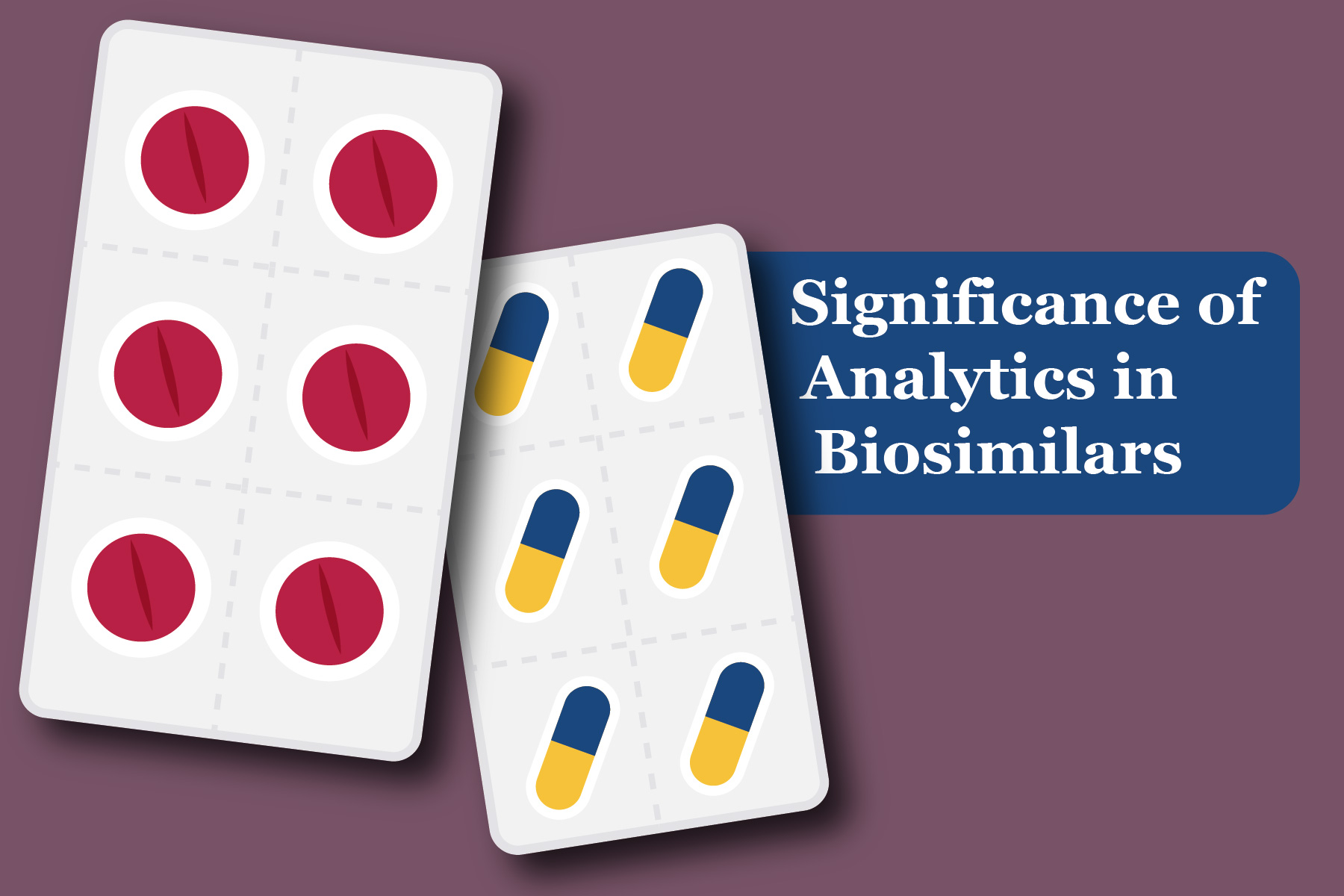Biosimilars are biological products that are composed or produced in living systems such as yeast or bacteria. They are defined as the medicinal drugs which function exactly like certain existing and approved drugs, often referred to as “reference product”. The major facets which make up a biosimilar are that they are “highly similar” to their reference product and they should have no clinically significant differences from safety, efficiency, and functionality perspectives.1
A vital tool in the development, evaluation, and FDA approval of these biosimilar products is data analytics. These data analyses are key evaluation measures for approving these biosimilars and may be performed using Cloud or AI-based statistical tools. A major chunk of the development phase is invested in the comparison of these biosimilars to their reference product. Initially, the analysis is subjected to the drug structure to validate if both products are similar in terms of chemical compositions. This includes comparing and analyzing chemical structural elements such as primary chemical sequences, molecule behavior, and bonding types. These structures also indirectly point to the functionality which is the next step in the analysis.2
The next step includes functionality comparisons which may be executed using the processes of pharmacokinetics and pharmacodynamics (PK-PD studies).3 It is the process of administrating a drug to record how the body handles a drug considering its life cycle which is the absorption, distribution, metabolism, and excretion. This analytical study is performed on the originator drug and then compared to clinical study results which were recorded while validating the reference product. Additional clinical studies including risk assessments may be performed to verify, validate, analyze, and identify any existing residual risks and potential hazards. If the FDA observes that the data recorded from all mentioned analyses supports the fact that the originator drug is highly similar to its reference product and possesses no clinically meaningful differences, the FDA approves the developed biosimilar to be further labeled and marketed in the health and medical industry.
For analytics, hardware devices may also be utilized such as mass spectrometry systems which provide the behavior of protein molecules in 3-dimensional space. These may be coupled with Cloud or AI-based statistical algorithms such as Decision Trees or Neural Networks to log data vectors that indicate cell interactions and behavior.4 As these systems would use huge clinical datasets, such data-driven tools would prove vital in extracting the relevant information from these huge data sets, which would be later fed as inputs for analysis for clinical data comparison and studies. Indeed, when such analysis is integrated with cutting-edge tools and technologies, it provides quick and precise results, which bolsters the chances of FDA approval.
To summarize, biosimilars are getting more popular and with the rising competition among pharmaceutical companies, it is helping patients cut down overall healthcare and medical costs. To get these biosimilars approved, data analytics plays a key role where the developed drug is compared in terms of its structure, functionality, safety, and overall quality to its reference product. Do you have a biosimilar based drug which needs help with data analytics along with an FDA approval? Our regulatory and software experts at EMMA International can ensure your drug is FDA compliant. Contact us at 248-987-4497 or info@emmainternational.com for additional information.
1FDA (February 2020). Biosimilars. Retrieved on November 29th from https://www.fda.gov/drugs/therapeutic-biologics-applications-bla/biosimilars.
2FDA (May 2018). The Basics of Biosimilars. Retrieved on November 28th from https://www.youtube.com/watch?v=1s7W1EKUekk&ab_channel=U.S.FoodandDrugAdministration.
3Chad Briscoe (October 2020) The Difference Between Pharmacokinetics and Pharmacodynamic. Retrieved on November 29th from https://www.bioagilytix.com/blog/2020/10/05/the-difference-between-pharmacokinetics-and-pharmacodynamics/
4FDA (May 2018). Data Requirements of Biosimilars. Retrieved on November 29th from https://www.youtube.com/watch?v=xHvU4rZtWa4&t=197s&ab_channel=U.S.FoodandDrugAdministration





